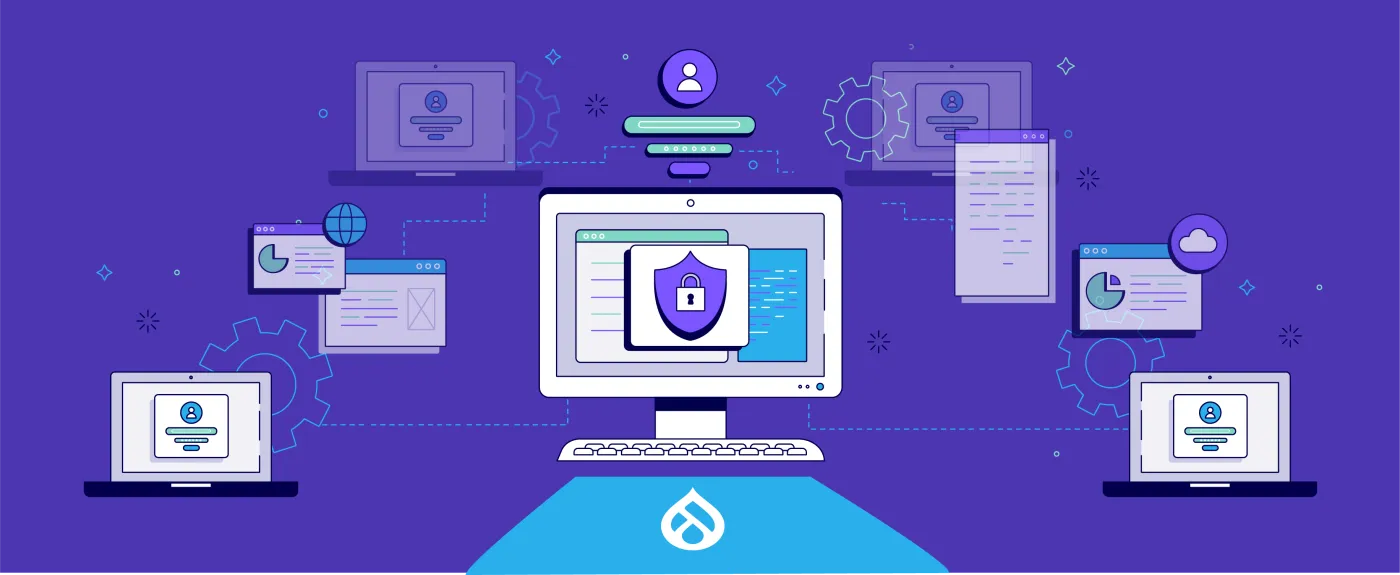Most common security risks in Drupal projects

Drupal is a popular content management system (CMS) used to build websites and web applications. Like any other software, Drupal can have security issues. Here are some of the most common security issues on Drupal:
- Vulnerabilities in contributed modules: Drupal has a large number of contributed modules that can be installed to extend the functionality of a website. However, these modules may have vulnerabilities that can be exploited by attackers to compromise the website. It is important to keep all modules up to date and only install modules from trusted sources.
- Weak passwords: Weak passwords are a common security issue on Drupal websites. If a user's password is easy to guess, an attacker can gain access to their account and potentially the entire website. It is recommended to use strong passwords and enforce password policies to prevent this.
- Cross-site scripting (XSS) attacks: XSS attacks occur when an attacker injects malicious code into a website that is then executed in a user's browser. This can be used to steal sensitive information or execute other attacks. Drupal has built-in protections against XSS attacks, but it is important to properly sanitize user input to prevent them.
- SQL injection attacks: SQL injection attacks occur when an attacker injects SQL commands into a website's database query. This can allow an attacker to view, modify, or delete data from the database. Drupal has built-in protections against SQL injection attacks, but it is important to properly sanitize user input to prevent them.
- Access control issues: Access control issues occur when users are granted more permissions than necessary. This can lead to unauthorized access to sensitive data or functionality. It is important to properly configure user roles and permissions to prevent access control issues.
- Insecure configuration: Insecure configuration occurs when Drupal is not configured securely. This can include using default passwords, leaving unnecessary ports open, or not properly configuring SSL/TLS. It is important to properly configure Drupal and the underlying infrastructure to prevent insecure configuration issues.
To mitigate these security issues, it is important to keep Drupal and all modules up to date, use strong passwords, properly sanitize user input, configure access control correctly, and configure Drupal securely. Additionally, it is recommended to regularly audit the website for security vulnerabilities and implement security best practices.
Best Practices
Here are some security best practices for Drupal websites:
- Keep Drupal and all modules up to date: Security vulnerabilities are often found in software and plugins. Keeping Drupal and all modules up to date with the latest security patches can help prevent attacks.
- Use strong passwords: Use strong passwords for all user accounts and enforce password policies. This can help prevent brute-force attacks and unauthorized access to accounts.
- Use two-factor authentication (2FA): Two-factor authentication adds an extra layer of security to user accounts. This requires a second form of authentication, such as a code sent to a mobile device or generated by an authentication app.
- Use HTTPS: Use HTTPS to encrypt communication between the website and visitors. This can help prevent attacks that intercept or modify communication between the website and visitors.
- Limit unnecessary access: Limit access to sensitive data and functionality to only those who need it. This can help prevent unauthorized access to sensitive information.
- Use a web application firewall (WAF): A WAF can help prevent attacks by filtering traffic to the website and blocking requests that match known attack patterns.
- Regularly backup data: Regularly backup website data to prevent data loss from attacks or other incidents.
- Use a secure hosting provider: Use a hosting provider that follows security best practices and provides security features such as DDoS protection, intrusion detection, and regular security audits.
- Regularly scan for vulnerabilities: Use security scanning tools to regularly scan the website for vulnerabilities and take action to address any identified issues.
- Follow the principle of least privilege: Only grant users the minimum level of access required to perform their tasks. This can help prevent unauthorized access to sensitive data or functionality.
By following these security best practices, you can help protect your Drupal website from security threats and keep your visitors' data safe.
The official website of the Drupal project, as well as industry best practices. Here are some links to the sources:
- Keep Drupal and modules up to date: https://www.drupal.org/docs/security/secure-your-site/keep-drupal-and-contributed-projects-up-to-date
- Use strong passwords: https://www.drupal.org/docs/security/secure-your-site/use-strong-passwords
- Use two-factor authentication (2FA): https://www.drupal.org/docs/security/secure-your-site/use-two-factor-authentication-2fa
- Use HTTPS: https://www.drupal.org/docs/security/secure-your-site/use-https
- Limit unnecessary access: https://www.drupal.org/docs/security/secure-your-site/limit-unnecessary-access
- Use a web application firewall (WAF): https://www.drupal.org/docs/security/secure-your-site/use-a-web-application-firewall-waf
- Regularly backup data: https://www.drupal.org/docs/security/secure-your-site/backup-your-site
- Use a secure hosting provider: https://www.drupal.org/docs/security/secure-your-site/use-a-secure-hosting-provider
- Regularly scan for vulnerabilities: https://www.drupal.org/docs/security/secure-your-site/regularly-scan-for-vulnerabilities
- Follow the principle of least privilege: https://www.drupal.org/docs/security/secure-your-site/follow-the-principle-of-least-privilege



